Microsoft Details Project Olympus Open Compute Standard
by Brett Howse on March 8, 2017 10:15 PM EST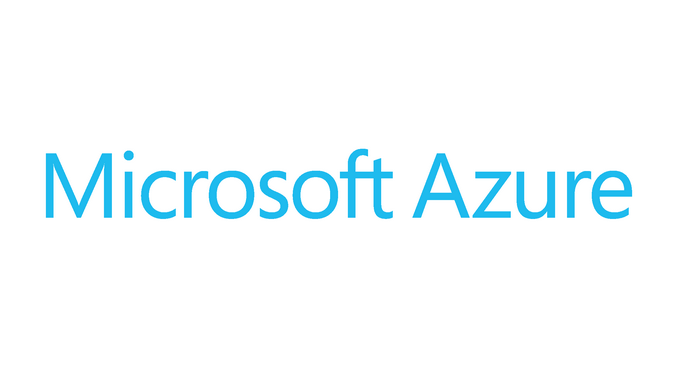
Today, at the 2017 Open Compute Project U.S. Summit, Microsoft unveiled some significant announcements around their hyperscale cloud hardware design, which they first announced in November as Project Olympus. With the explosion of growth in cloud computing, Microsoft is hoping to reduce the costs of their Azure expansion by creating universal platforms in collaboration with the Open Compute Project. Project Olympus is more than just a server standard though. It consists of a universal motherboard, power supplies, 1U and 2U server chassis, power distribution, and more. Microsoft isn’t the first company to want to go down this road, and it makes a lot of sense to cut costs by creating standards when you are buying equipment on the level of Azure.
The company made several big announcements today, with the first one coming somewhat as a surprise, but when you read between the lines, it makes a lot of sense. Microsoft is partnering with Qualcomm and Cavium to bring ARM based servers to Azure. This is a pretty big shift for the company, since they have focused more on x86 computing, and changing to a new ISA is never a small task, so Microsoft is clearly serious about this move.
Microsoft Distinguished Engineer Leendert van Doorn expanded on why the company is exploring this option in a blog post today. Clearly ARM has made some progress in the server world over the last few years, and Microsoft feels it’s the right time to bring some of that capability to their own datacenters. I think one of the key takeaways is that Microsoft wants to shape the hardware capabilities to the workload, and with an open platform like ARM, this can make a lot of sense for certain workloads. He points out that search and indexing, storage, databases, big data, and machine learning, are all named as potential workloads, and in cloud computing, these are all significant in their own right.
Qualcomm Centriq 2400 Platform
Microsoft already has a version of Windows Server running on ARM, and they’ve announced that both of their partners will be demonstrating this internal use port of Windows Server, first with Qualcomm with their Centriq 2400 processor, with 48 cores on Samsung’s 10nm FinFET process. Cavium will be running on their second generation ThunderX2 platform. Our own Johan De Gelas did a thorough investigation of the original ThunderX platform in June 2016 and it is certainly worth a read. The takeaways were that Cavium needed to do a lot of work on power management, and they had some big performance bottlenecks, so they offered inferior performance per watt compared to a Xeon D, but better than advertised single-threaded performance with SPEC 2006 results only 1/3 the Xeon results, rather than the 1/5 that was advertised. If Cavium has fixed some of the issues, especially power consumption, the new ThunderX2 might be a compelling solution for specific tasks.
Cavium ThunderX2 Platform
That is really the kicker though. The ARM platform, if properly executed, should be a good solution for some specific tasks, and if Microsoft can work with the platform makers to shape the hardware to fit specific tasks, but still be more general purpose than an ASIC, but at this time, it’s unlikely to be a serious threat to Intel’s monopoly on the datacenter at the moment. Intel has a pretty sizeable advantage in IPC, and especially on single-threaded workloads, so x86 isn’t going anywhere yet. What really matters is how Qualcomm and Cavium can execute on their platforms, and where they price them, since the end goal for Microsoft with this change is certainly, at least to some extent, to put pressure on Intel’s pricing for their datacenter equipment.
Back on the x86 side, Microsoft also had some announcements there as well. AMD will also be collaborating with Microsoft to include their Naples processor into Project Olympus, which is their new server processor based on the “Zen” architecture. Although much of the news today has been around the ARM announcement, this is arguably the bigger play. Ryzen has already shown it is very competitive with Core, and Naples could be very strong competition for Xeon. We’ll have to wait for the launch to know for sure.
Microsoft didn’t abandon Intel either, and they announced close collaboration with Intel as well. This will be not only for Intel’s general purpose CPUs, but also for Intel’s FPGA accelerators and Nervana support. Microsoft already has FPGAs in Azure, so adding them to Project Olympus is a no-brainer.
Microsoft also announced a partnership with NVIDIA today, bringing the HGX-1 hyperscale GPU accelerator to Project Olympus. HGX-1 is targeted at AI cloud computing, which is certainly an area where there has been tremendous growth. Each HGX-1 will be powered by eight NVIDIA Tesla P100 GPUs, each with 3584 Stream Processors, based on the GP100 chip, and a new switching design based on NVIDIA NVLink and PCIe which allows a CPU to connect to any number of GPUs dynamically. NVIDIA states the HGX-1 provides up to 100x faster deep learning performance compared to CPU-based servers.
This is a pretty substantial update today for Project Olympus, and it looks to be an incredibly modular platform. Anyone reading that Microsoft is dropping Intel for ARM in Azure is misunderstanding this goal. Looking at the platform as a whole, it is abundantly clear that Microsoft wants a platform that can be designed to work with any workload, and still offer optimal performance, and efficiency. Some tasks will be best on ARM, some on x86, while GPUs will be leveraged for performance gains where possible, and FPGAs being utilized for other tasks. When you look at computing on the scale of something like Azure, it only makes sense to dedicate hardware to specific workloads, since you’ll certainly have enough different workloads to make the initial effort worthwhile, and that isn’t always the case when looking at small business, medium business, or even most enterprise workloads.
Source: Microsoft Azure Blog


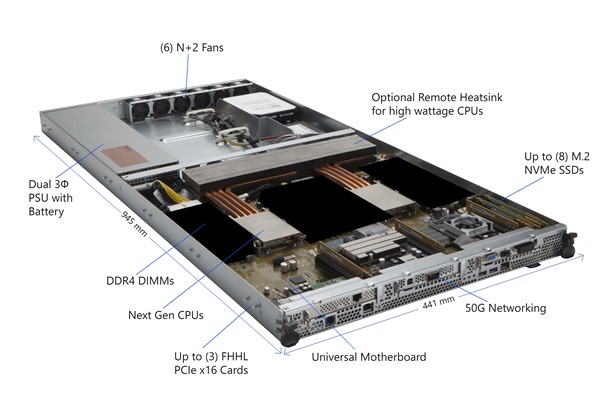
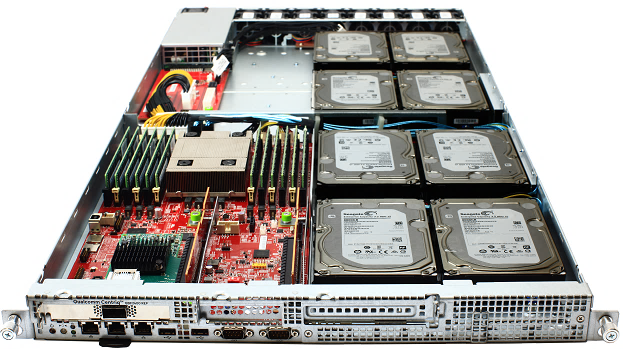
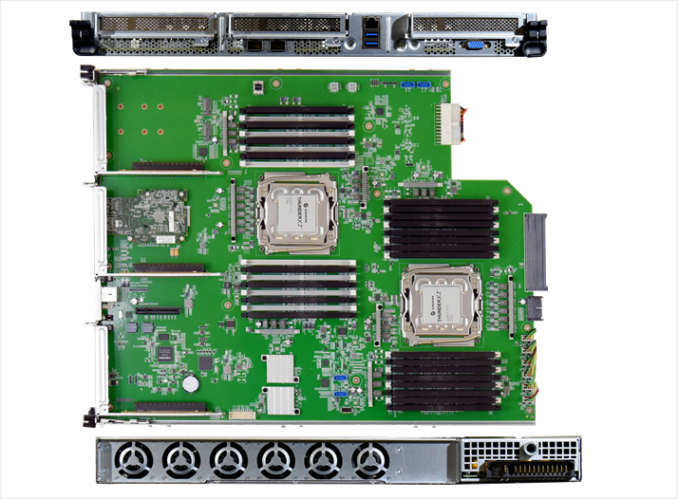
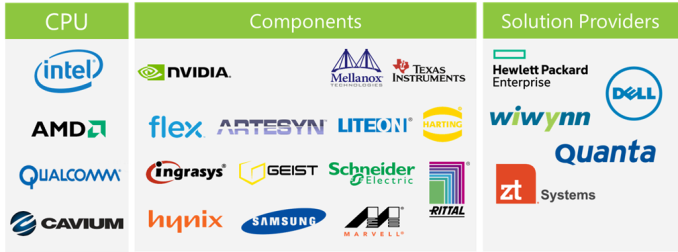









65 Comments
View All Comments
HomeworldFound - Thursday, March 9, 2017 - link
Bath Salts or Crack?Bullwinkle J Moose - Thursday, March 9, 2017 - link
I'm guessing you're on both!Amiright?
HomeworldFound - Friday, March 10, 2017 - link
We don't have either here, nobody wants to throw their life away or die.StevoLincolnite - Friday, March 10, 2017 - link
Snorting Redbull is not okay. Please refrain from doing so again.BrokenCrayons - Friday, March 10, 2017 - link
He's sane, (probably) sober and is fully aware of what he's doing. It's attention-seeking behaviour to present the most outrageous sort of view and then wait to see the inevitable responses it generates and then take the time to reply to them. As he refines his methods, if he's still here under the same user name (unlikely), you'll see the method become more refined and subtle as he learns to be more effective at manipulation and not hunt mere numbers of responses, but the ability to blend and still illicit outrage.In a way it's trolling, but it's on the low end of the sophistication spectrum, perhaps a step or to up from someone picking a common hot debate issue and slinging out an extreme viewpoint in a chat room. It's still similar, but because those issues are regularly used for trolling, people are more wary. Computer enthusiasts, on the other hand, tend to be brand loyalists and easy to stir up because they've historically been not as aware of the potential. Plus, they tend to feel as though their technical background makes them more intelligent which, in some ways, makes it easier to get them excited. That's changing over time, I think, but the people provoking them will lag a bit in learning their targets are getting jaded. That's when they'll refine their means and methods -- at the point when they realize they can get more of what they want by changing their approach.
Bullwinkle J Moose - Friday, March 10, 2017 - link
Great Response Crayons!Not the personal attacks you were once known for
I am simply advertising a point of view exactly the same way Microsoft does, but from the exact opposite viewpoint
Microsoft advertises the best security with Windows 10 yet offers ZERO proof that their statements are true
I advertise that Windows 10 is nothing more than a Government sponsored Spyware Platform and have shown hundreds of examples why this is a true (yet unpopular) statement
Secure boot / UEFI / and other "modern" technologies have locked you into a system where you must now boot to either a Spyware Platform or risk losing software as well as hardware compatibility and performance by turning to Linux
I on the other hand can boot directly to Windows 10 Spyware or Boot directly to a Locked down, Read Only copy of Windows XP by installing Driveshield
I have not had a Bluescreen of Death in over 10 years because only critical apps that cannot be made portable are installed directly preventing registry errors and DLL conflicts that cause Bluescreens
I can simply reboot to shake off malware and infections that destroy newer versions of Windows
Many of the "fixes" I've made to XP over the years have been taken by Microsoft and added to newer Versions of Windows and advertised as NEW and IMPROVED Microsoft Products!
I can back up my statements as facts with evidence to show for them
Microsoft cannot do the same for their statements
This is not Trolling
I am simply showing how you have all been deceived in the press
Running Virtual Machines of XP from within a Spyware Platform is not a solution!
Microsoft has repeatedly added limits to what you may do with "YOUR" computer and what O.S. may be run
Your new machine is nothing more than a Game Console with added browsing capability
and my bargain basement Goodwill Computer (Sandy Bridge) lets me run whatever I want without the Microsoft backdoored encryption and O.S. Keyloggers phoning home whenever they like
If you wish to prove me wrong, I eagerly await your EVIDENCE, not Microsoft approved propaganda
I'm sorry that you believe this is Trolling
but your beliefs won't help you in this brave new World!
Alexvrb - Saturday, March 11, 2017 - link
If you're not trolling (most likely answer), you're a liar who has proven nothing. Absolutely no concrete evidence. Your words are not proof, and the burden of proof rests entirely on you. "Prove me wrong" is a dead giveaway to either a nearly-clever troll, as any person with a functioning logic unit would realize that slinging out accusations and then demanding others prove them wrong is laughably backwards.Bullwinkle J Moose - Saturday, March 11, 2017 - link
Microsoft has proven nothing and neither have yourefusing to look at the evidence or honestly research it yourself does not affect the outcome
You are still unsafe because of Microsoft Products
This is by design!
There is no profit in End User Security
But keeping you unsafe means endless profits for Microsoft while endlessly working towards better security and failing endlessly
Alexvrb - Saturday, March 11, 2017 - link
You're actually a serial killer. Prove me wrong. Guilty until proven innocent. See how obnoxious it is to make claims and then try to place the burden of proof on skeptics?Wait, no, because you're a troll.
Alexvrb - Thursday, March 9, 2017 - link
What does it matter? It will run whatever you want it to run. With virtualization you could run several different operating systems at once. It's good to see Windows Server running on ARM, and not just their consumer variants of the OS. That helps further solidify Windows on ARM efforts.Anyway: Naples! When I saw the first picture I wondered if "next-gen CPUs" might include a certain Zen-based server CPU. Glad to see AMD already getting customers lined up for Naples. I hope they sell them as fast as GloFo cranks them out, to ensure we'll see strong Zen successors.